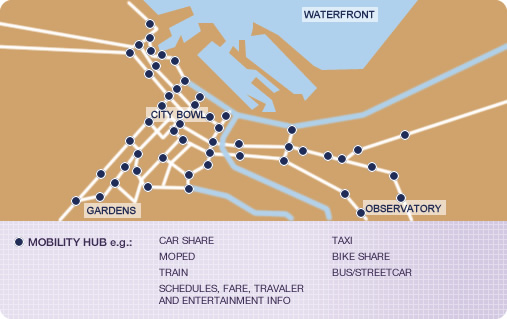Toolbox
What Is New Mobility?
As we reach the limits of conventional models of mobility, "New Mobility" offers a practical route forward. New Mobility approaches transportation needs and options from a systems perspective. It relies on collaborative partnerships and information technology to bring existing services, products, technologies, infrastructure and design together into something that is greater than the sum of its parts – smarter, more sustainable, more convenient, more equitable and better connected.
Examples of New Mobility systems already exist, notably Hong Kong's "Octopus" system, which uses a "smart card" to provide travelers with access to multiple transit services as well as ferries, parking and retail outlets. Other examples exist in Bremen, Germany; Bogotá, Colombia; Paris, France; Curitiba, Brazil; Portland, Oregon; and more. Key features of New Mobility systems include the innovative use of technology to link diverse transportation systems such as rail, bus and subway with car sharing, bike sharing and other options, to provide flexible, seamless, door-to-door trips. Technologies can also enable distance working, learning, medicine and shopping, thereby reducing the need for some trips altogether. And still other information technologies support the sustainable and efficient movement of goods in urban regions, a growing area of concern and opportunity for innovation.
New Mobility also depends on something more old-fashioned: collaboration and partnership. Technology can "connect the dots," but only humans can get the varied institutions and interests involved in urban mobility to work toward a common end. Thus, New Mobility projects like those described in this section require extensive stakeholder engagement and establishment of trust between the many partners with a role to play.
New Mobility

Mobility Options
Urban commuters would be able to "connect the dots" using PDAs or cell phones, on which they could get scheduling, navigation, and congestion identification and avoidance information, as well as pay fares as needed.
Benefits
High-quality, safe, clean transportation that is widely accessible in crowded urban areas can reduce congestion, fuel consumption, pollution and carbon emissions.